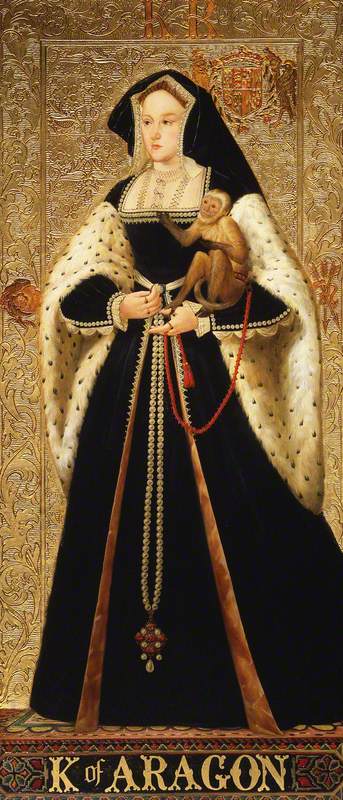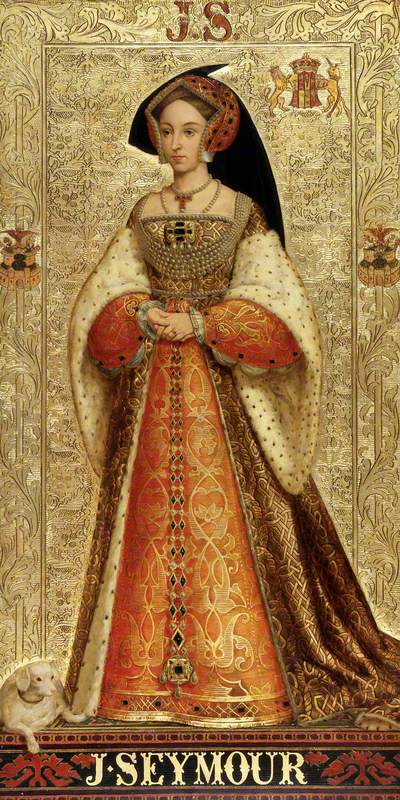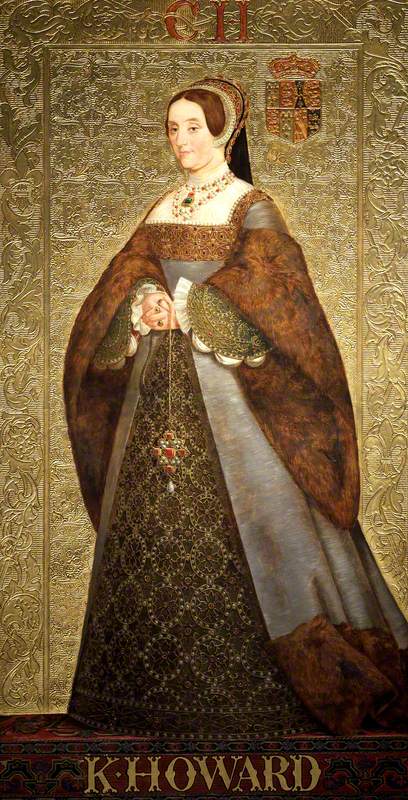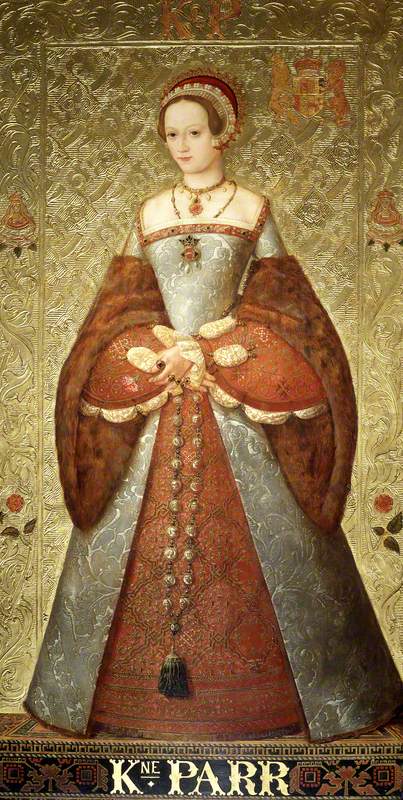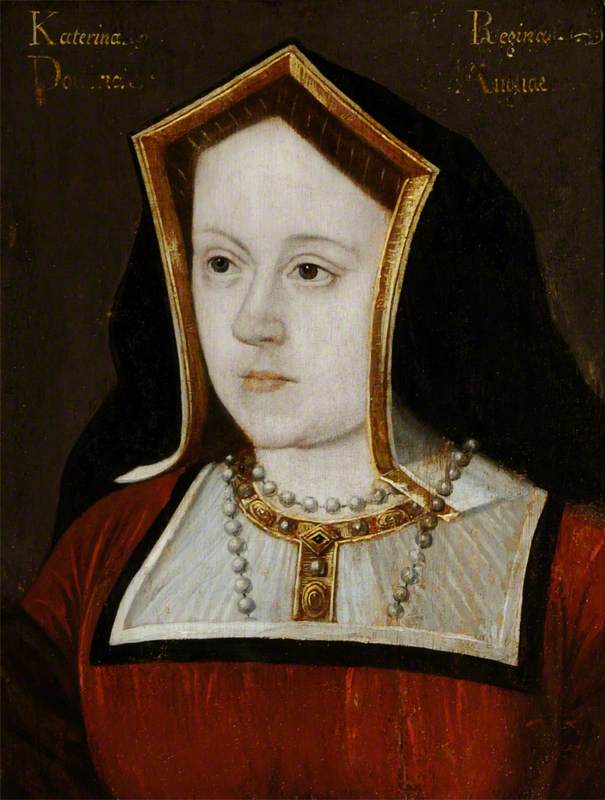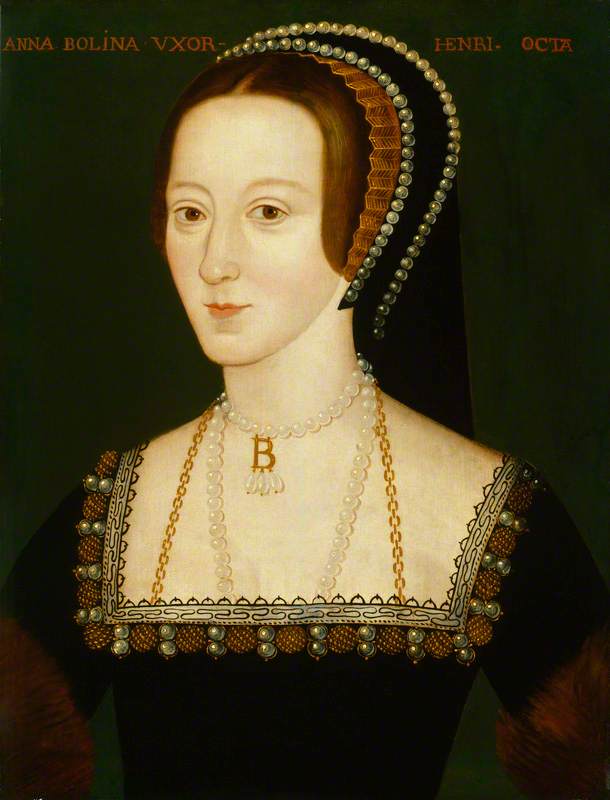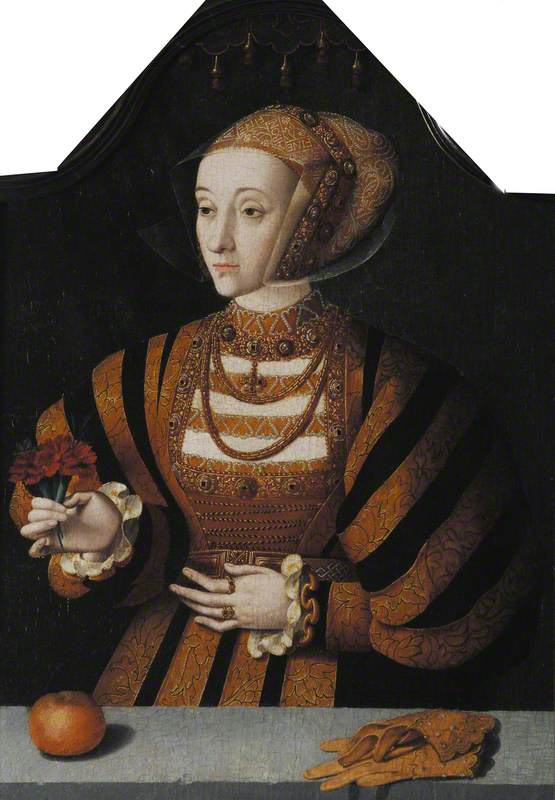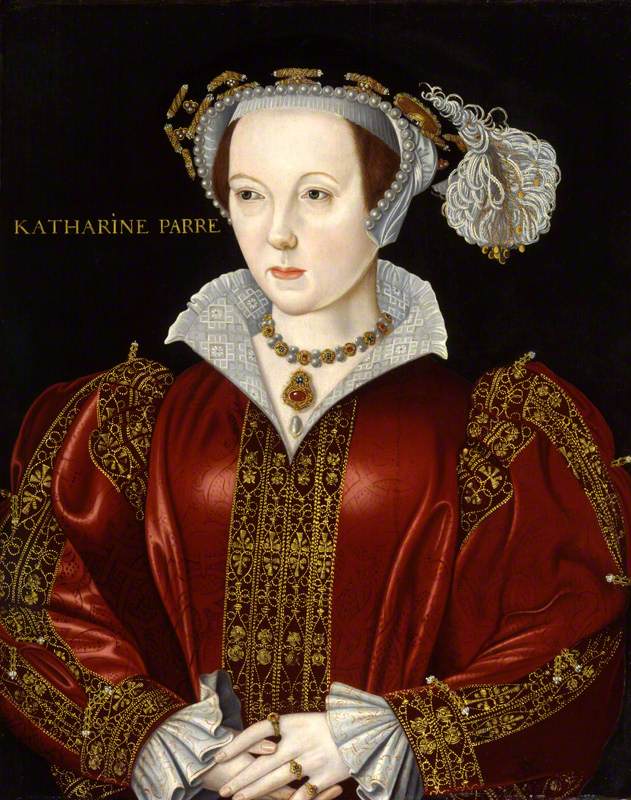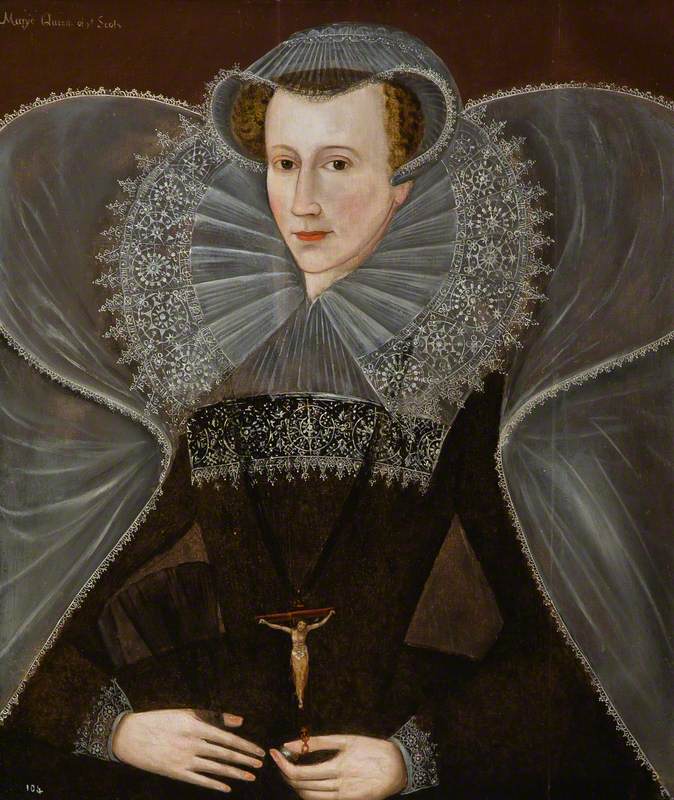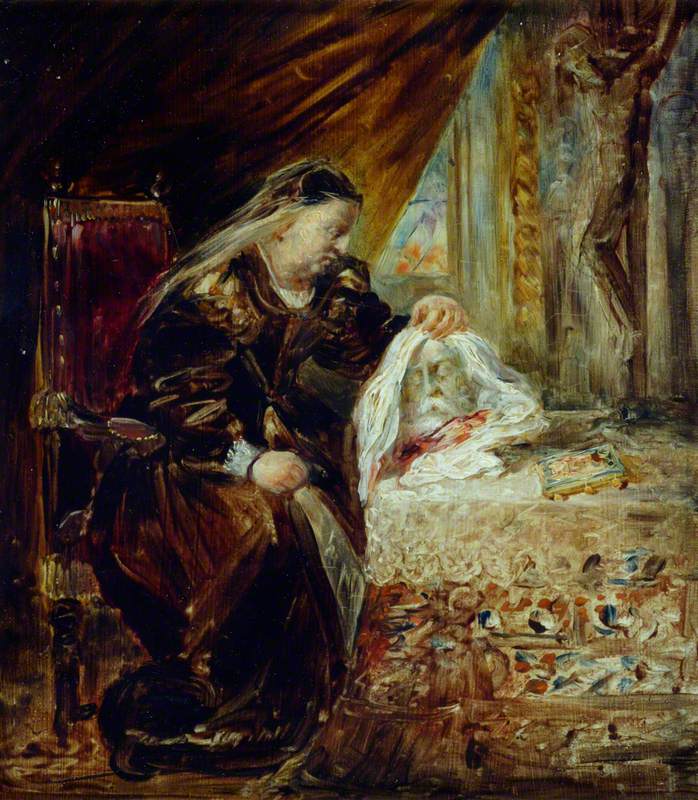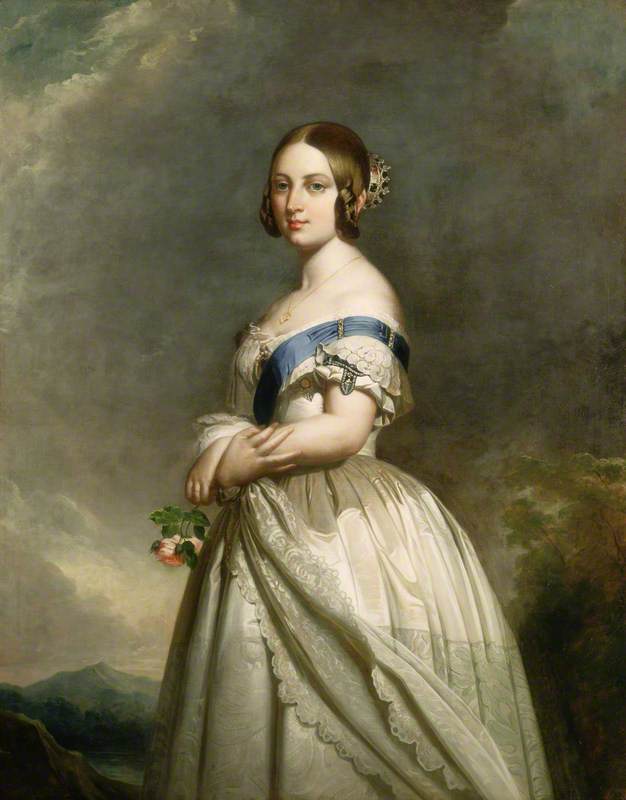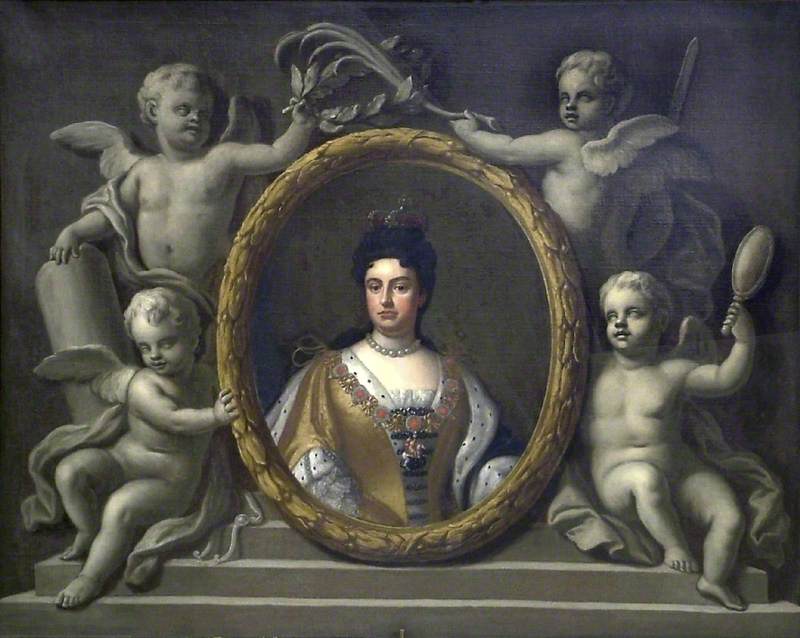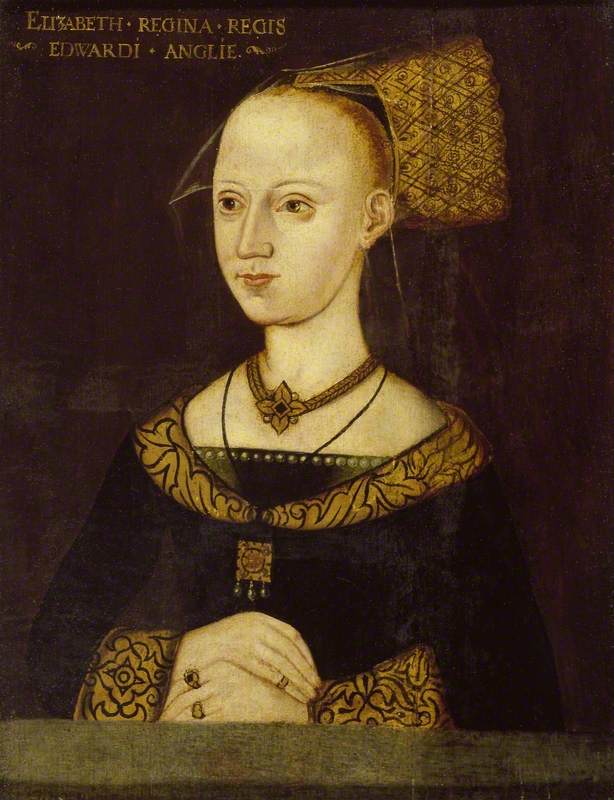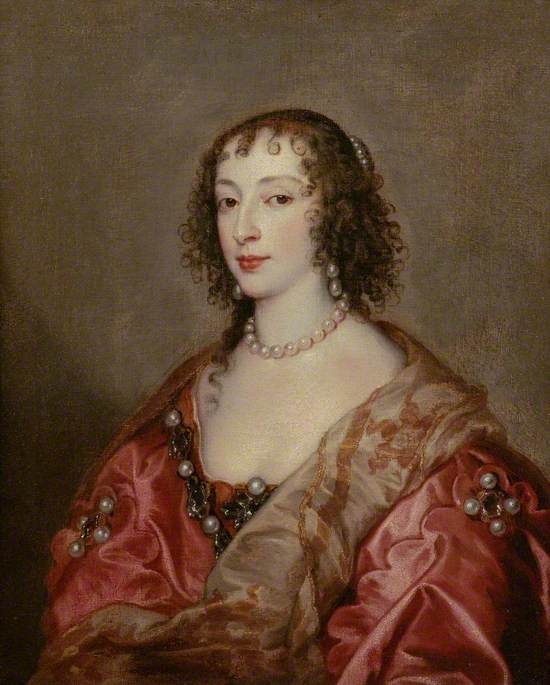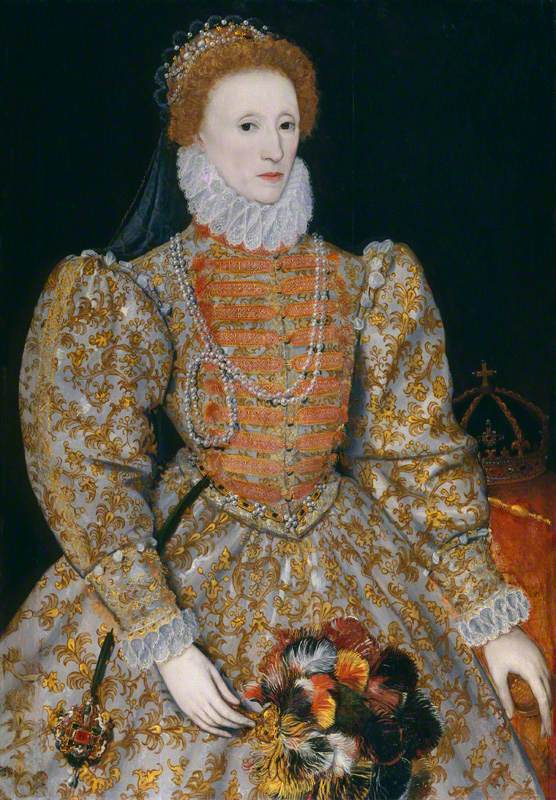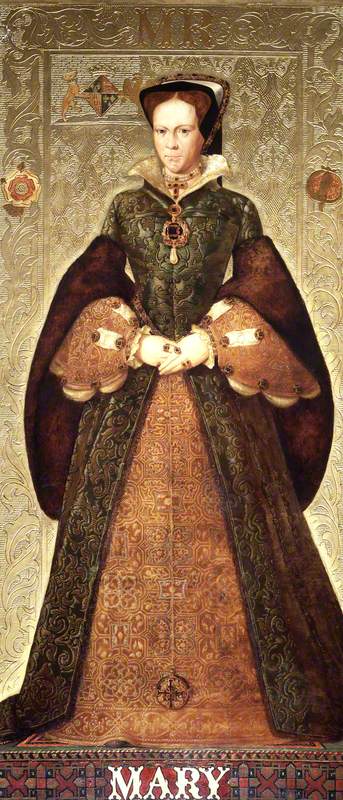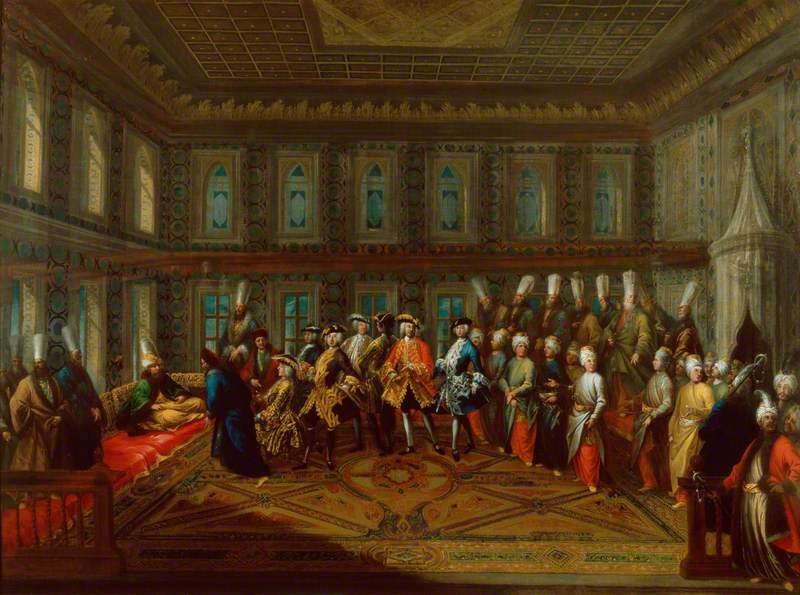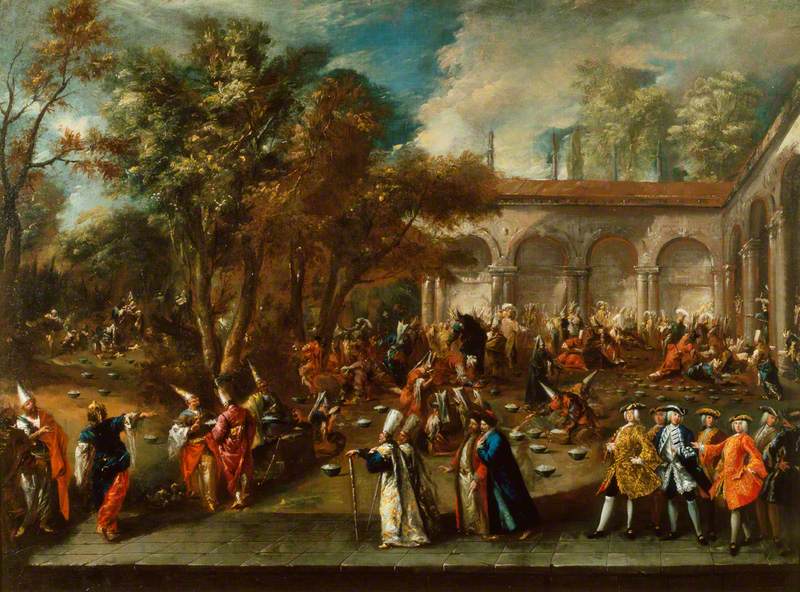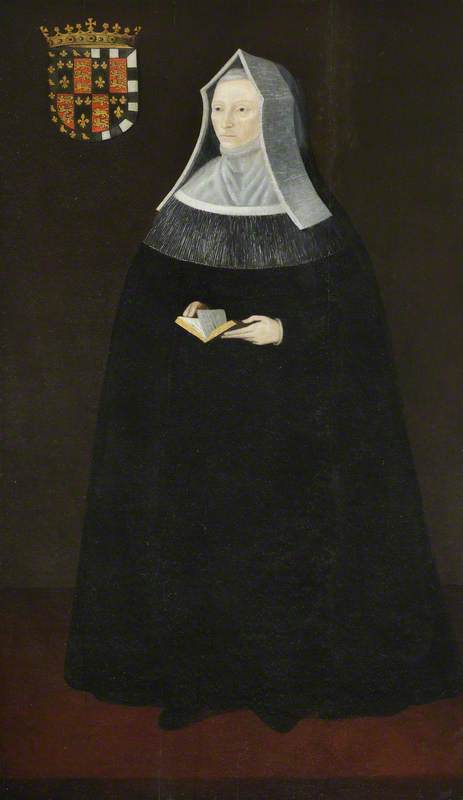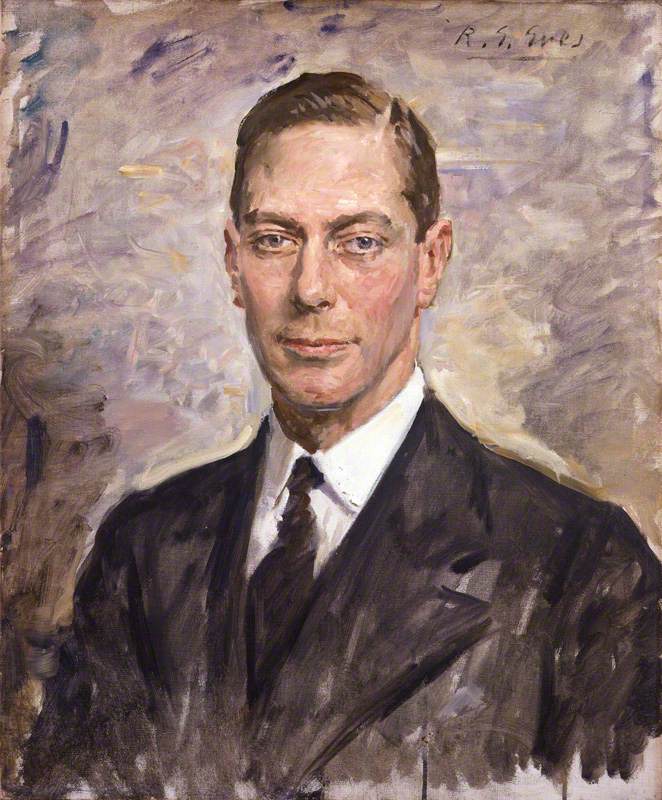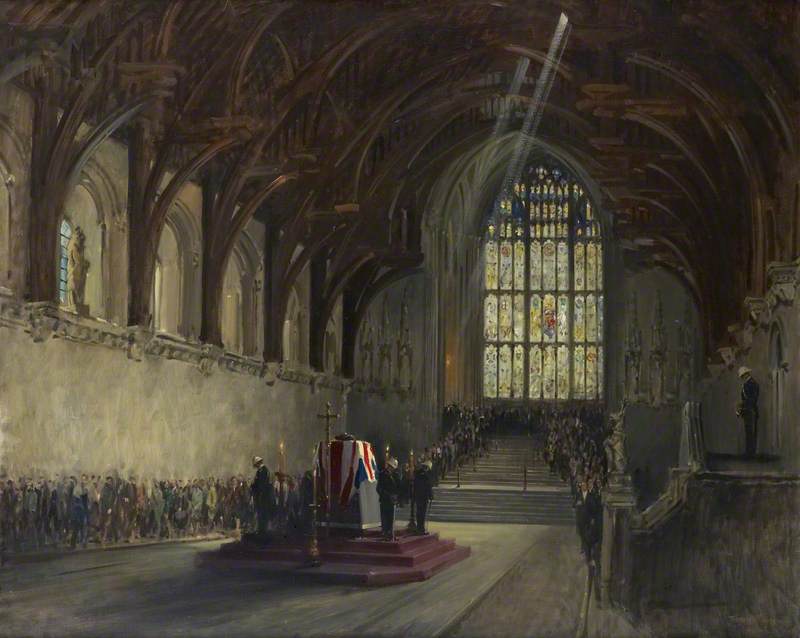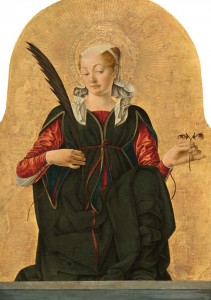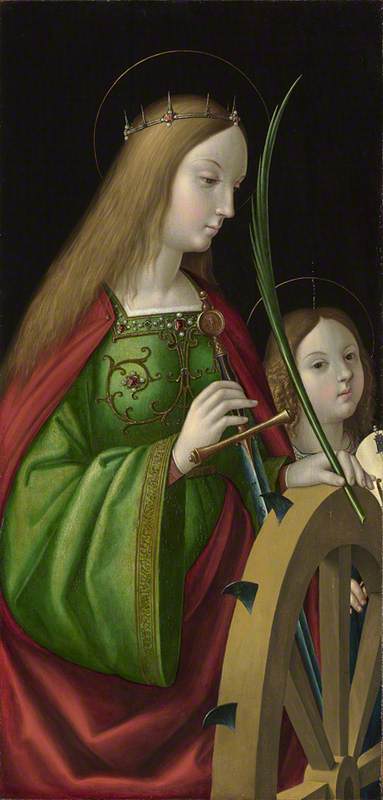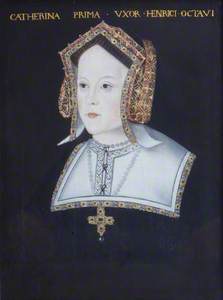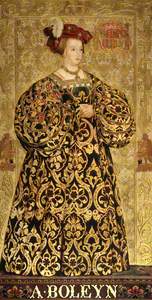Divorced. Beheaded. Died. Divorced. Beheaded. Survived.
Most of us know the tragic fates of Henry VIII's six wives. None of them (maybe with the exception of Anne of Cleves) truly knew a happy ending. Yet, the names of Catherine/Katherine of Aragon, Anne Boleyn, Jane Seymour, Anne of Cleves, Catherine Howard, and Catherine Parr remain emblematic of English history. They were Henry VIII's six consorts, and most of them truly suffered by his side, in one way or another.
It all started with a Spanish princess, Catherine/Katherine of Aragon, or Caterina/Katerina of Aragon. The last daughter of Ferdinand of Aragon and Isabella of Castile, she was the perfect match for Henry VII of England's firstborn, Arthur, heir to the English throne.
Preparatory Sketches of Prince Arthur and Katherine of Aragon
c.1854
Richard Burchett (1815–1875) (studio of) 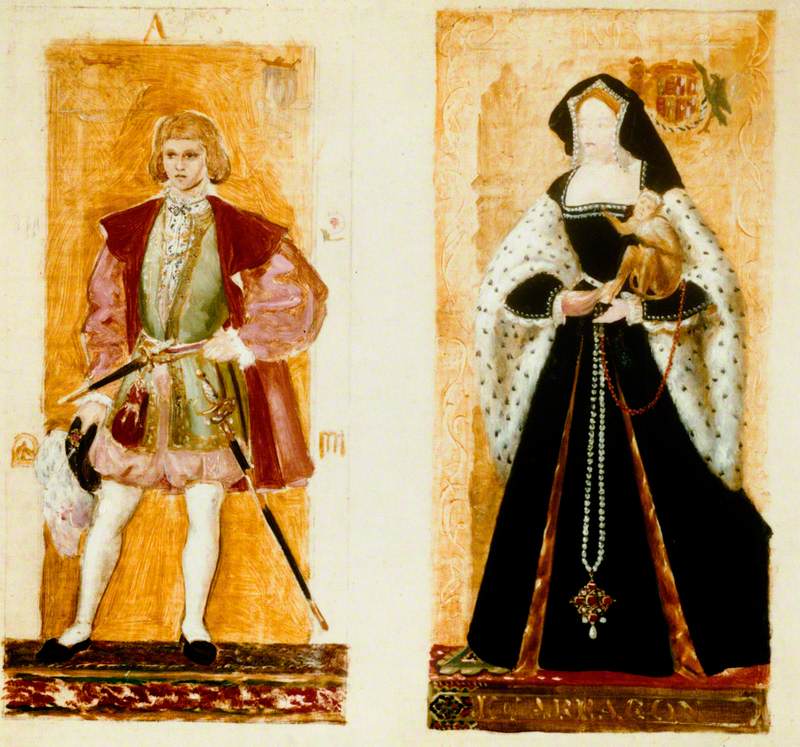
Unfortunately for her, Arthur died just six months after their wedding, yet her dowry and diplomatic importance made her the perfect bride for Henry VII's second son, and now heir to the throne, Henry – the future Henry VIII. The couple seemed to get along well, and for the first ten years of their marriage, it seemed like a match made in heaven.
Catherine was considered to be a great Spanish beauty, with a nice olive complexion, a beautiful round face, and dark eyes.
But Catherine only gave birth to a daughter (the future Mary I), putting the dynasty in jeopardy. Henry VIII desperately wanted a son and, by the 1530s, he was more determined than ever to make it happen – with or without his spouse.
After years of discussion of an annulment (as Catherine had been betrothed to his brother first), Henry let himself become convinced that he needed to break with Rome in order to make his pursuit of a male heir happen.
The Trial of Queen Catherine of Aragon
(study for a mural at the Houses of Parliament) 1909
Frank O. Salisbury (1874–1962) 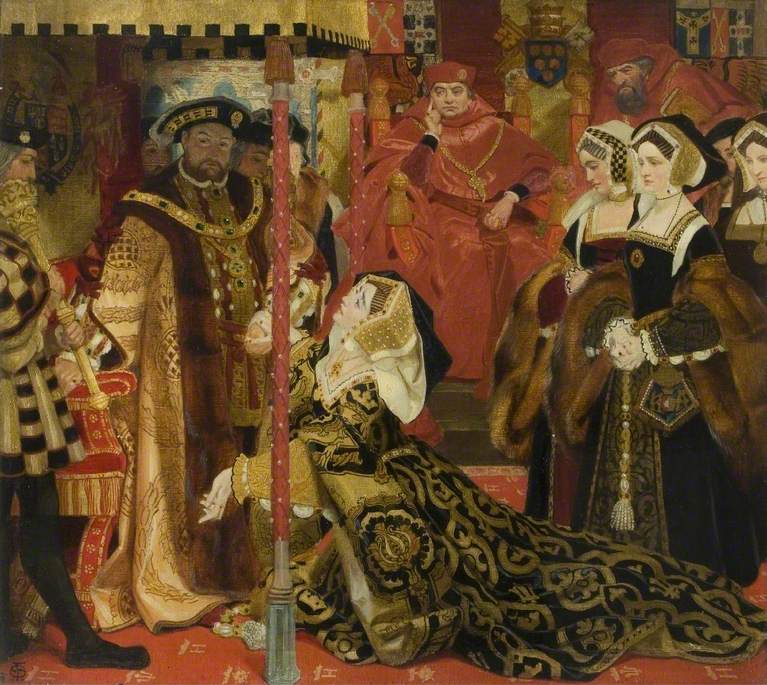
Catherine was left begging her husband not to leave her, and the last years of her life were stained by this representation of a humiliated and distraught queen consort.
The Trial of Queen Catherine of Aragon
1846–1848
Henry Nelson O'Neil (1817–1880) 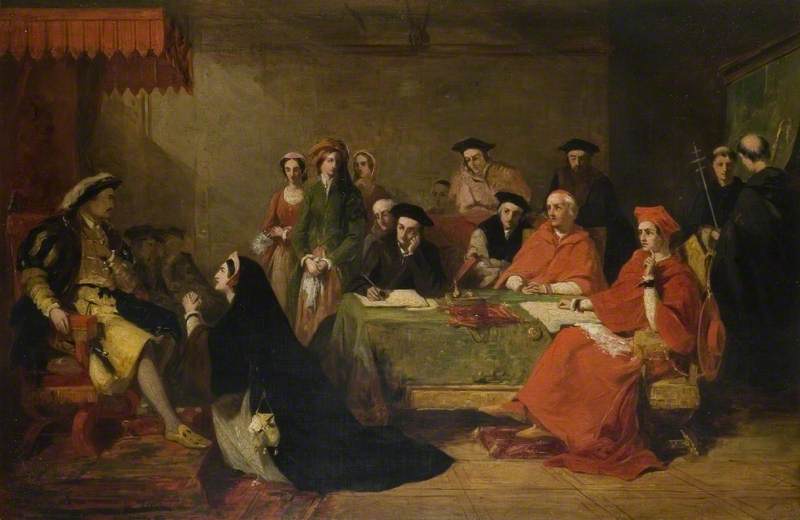
Henry eventually remarried, this time to Anne Boleyn, a beautiful woman who had served as lady-in-waiting to Catherine and who had spent some years at the French court.
But her fate would also not be a happy one; the lovers had only three beautiful years together before she became an apparent failure for not giving birth to a male heir herself. Indeed, on 7th September 1533, she gave birth to a baby girl: the future Elizabeth I of England. Henry felt like he had repudiated his first wife for nothing, and soon, unfounded attacks on Anne Boleyn's virtue and fidelity were starting to spread at court.
Anne Boleyn was eventually arrested and tried for high treason, and on 19th May 1536, she was executed at the Tower of London. Her real crime? Falling for Henry VIII and giving birth to a daughter.
The Arrest of Anne Boleyn at Greenwich
1872
David Wilkie Wynfield (1837–1887) 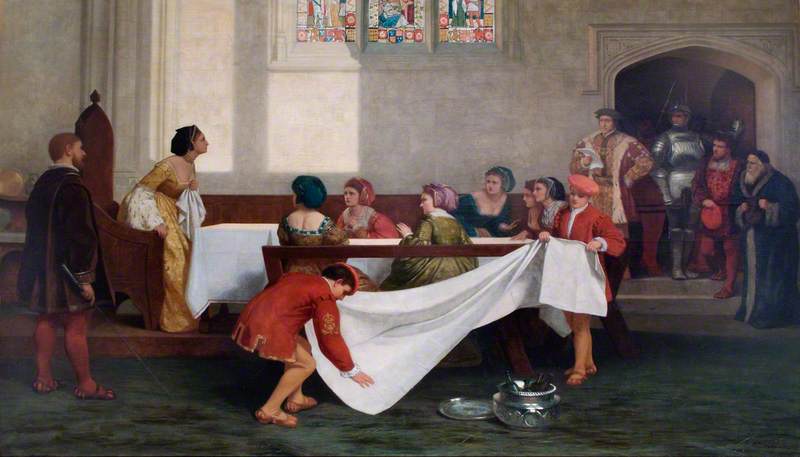
Anne was rapidly replaced. Jane Seymour, another lady-in-waiting, was Henry VIII's new love.
Jane Seymour (c.1509–1537)
late 16th C
Hans Holbein the younger (c.1497–1543) (after) 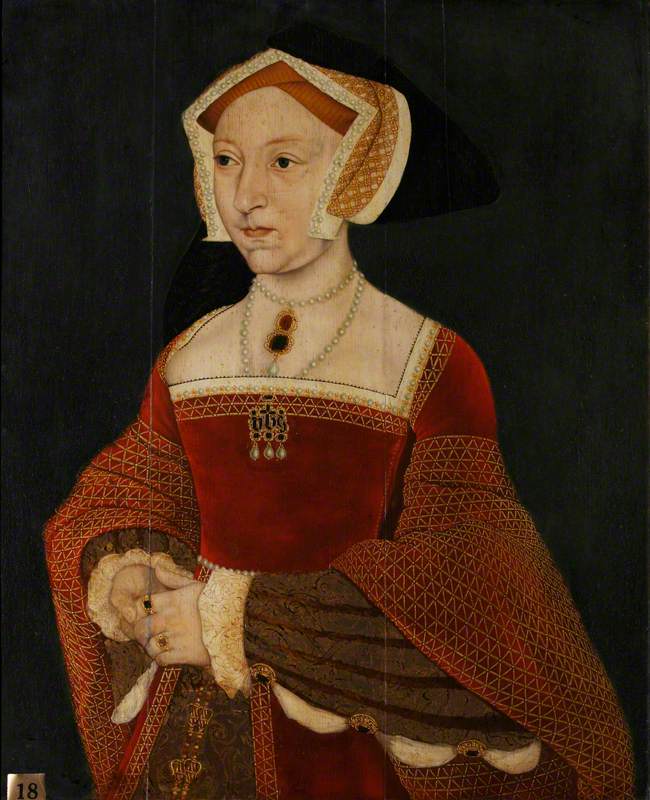
Her fair hair made for a stark change from his past two wives, and she was also said to be more lenient and obedient.
Queen Jane Seymour
c.1795–1800
Hans Holbein the younger (c.1497–1543) (after) 
For a long time, Anne Boleyn and Jane Seymour have been compared to one another: Anne, failing to secure the dynasty with a male heir, and Jane, the saviour of the Tudor dynasty, with the birth of her son, Edward, on 12th October 1537. Tragically, however, Jane died just twelve days after giving birth to her son.
Preparatory Sketches of Anne Boleyn and Jane Seymour
c.1854
Richard Burchett (1815–1875) (studio of) 
The next two wives share two different fates as well, and many consider Anne of Cleves to be the luckiest of Henry VIII's six wives.
Anne of Cleves (1515–1557), Queen Consort to Henry VIII
c.1539
Bartholomaeus Bruyn the elder (1493–1555) (circle of) 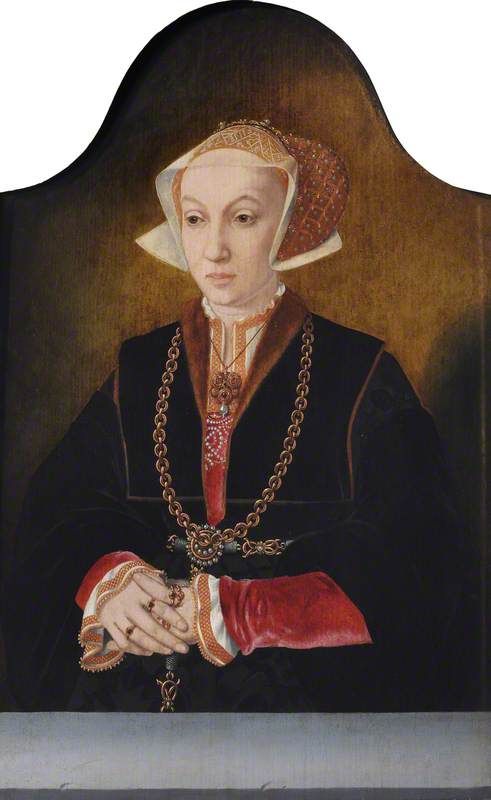
Indeed, the Tudor king chose not to consummate the marriage and instead got an annulment from her; she was only queen consort of England from 6th January to 9th July 1540. She was, however, given a generous settlement by the king, including Richmond Palace and Hever Castle.
The next wife, Catherine Howard – who was only 17 years old when she married Henry – was not fortunate enough to know the same fate as Anne of Cleves.
Preparatory Sketches of Anne of Cleves and Catherine Howard
c.1854
Richard Burchett (1815–1875) (studio of) 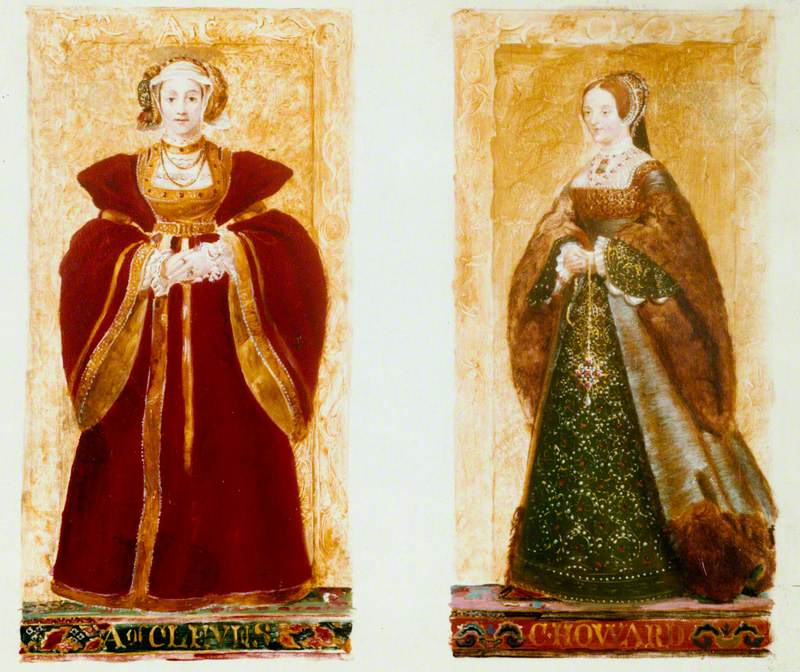
Indeed, soon after Henry and Catherine's wedding on 28th July 1540, rumours of Catherine's infidelity started spreading at court. Catherine had made enemies at court because of her capricious temperament.
By spring 1541, Catherine was accused of having an affair with Thomas Culpeper, a male courtier, and in November 1541, she was questioned by a delegation led by Archbishop Cranmer. Soon afterwards she was stripped of her title as queen, and though she was never officially tried, she was executed on 13th February 1542.
Cranmer Endeavouring to Obtain a Confession of Guilt from Catherine Howard
1849
William Lindsay Windus (1822–1907) 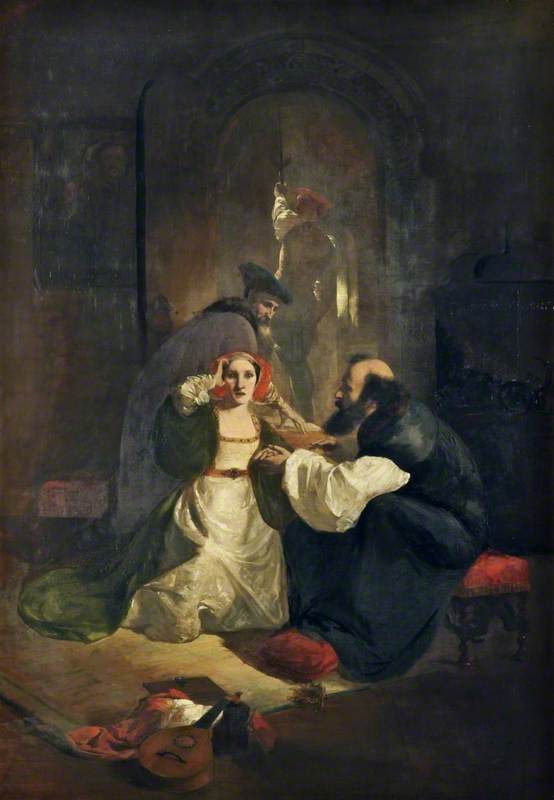
The last wife was Catherine Parr, and she actually survived Henry VIII. Despite being in love with another man, she married the king on 12th July 1543. She developed a close relationship with the royal children and, like Katherine of Aragon before her, she was appointed regent from July to September 1544 while Henry was on a military campaign in France. She maintained good relations with Henry until his death in 1547, and outlived him by only one year.
Her religious influence on Elizabeth and Edward remains uncontested, as she was very much involved with their education.
She is often remembered as a fair and benevolent queen.
Queen Catherine Parr (1512–1548)
(after Master John?) 17th C/18th C
British (English) School 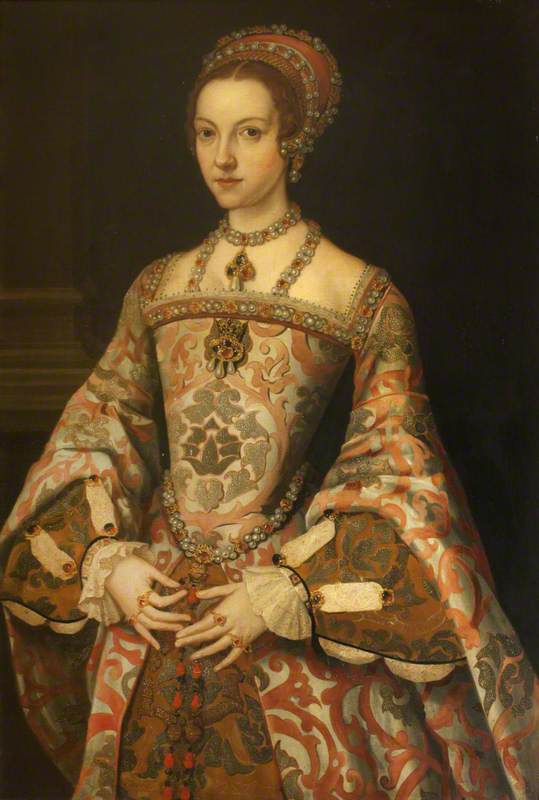
Overall, and despite Anne of Cleves and Catherine Parr having better fates than their four counterparts, Henry VIII's six wives remain Henry VIII's six victims. He more or less humiliated or hurt all of them in one way or another and was responsible for their dismay – or their doom.
But, in the end, their names and fates remain intertwined with one another, even centuries after their deaths. They remain 'the Six' and are remembered as such for posterity.
Estelle Paranque, historian and author
Further reading
Carole Levin, Debra Barrett-Graves, and Jo Eldridge Carney (eds.), High and Mighty Queens of Early Modern England, Palgrave Macmillan, 2003
Antonia Fraser, The Wives of Henry VIII, Alfred A. Knopf, Inc., 1992
Retha Warnicke, Elizabeth of York and Her Six Daughters-in-Law: Fashioning Tudor Queenship, 1485–1547, Palgrave Macmillan, 2017
Retha Warnicke, Wicked Women of Tudor England: Queens, Aristocrats, Commoners, Palgrave Macmillan, 2012
